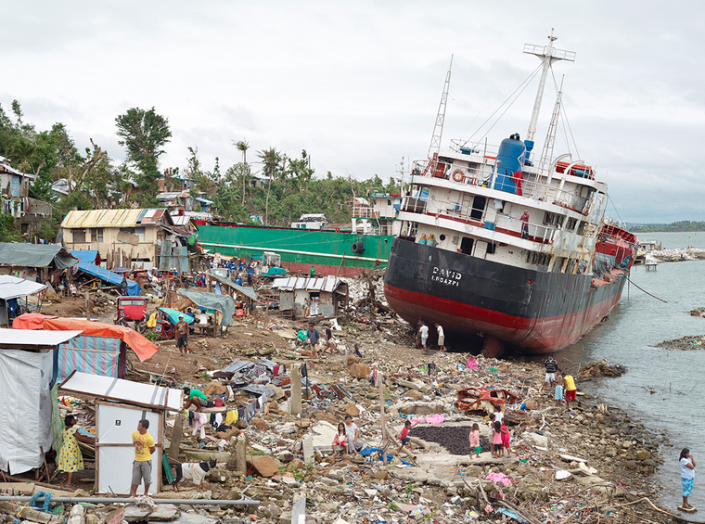 Imagine a super typhoon with a width that spans the entire US Eastern Seaboard. Now, imagine that storm sweeping through a country, causing flooding, landslides and widespread devastation to homes, infrastructure and the agricultural economy. This was a reality for the Philippines on November 8, 2013.
Imagine a super typhoon with a width that spans the entire US Eastern Seaboard. Now, imagine that storm sweeping through a country, causing flooding, landslides and widespread devastation to homes, infrastructure and the agricultural economy. This was a reality for the Philippines on November 8, 2013.
As a Filipina-American, I've been conflicted with how to give back to my homeland. I was born in the States. I've only been to the Philippines a few times - all visits occurred within the past couple of years. How can I possibly be connected to a country that I have never called home? This identity crisis of mine is not unique to my story. In fact, several Fil-Ams grapple with this, including those who may have moved from the PI to the US at a very young age, and identify more closely as an American. So what have I done to give back? I've donated to charitable causes aiding those affected by Typhoon Haiyan (or Typhoon Yolanda). I've supported and advocated for non-profits that are rebuilding in Central Philippines, such as Advancement for Rural Kids (ARK). But among the most helpful for me has been to both read and write about it, and share stories with others. Talking about how the typhoon as affected me has been the first step.
It's been over a year since Haiyan devastated the Philippines. Like other natural disasters - since it's no longer covered by the media - it can be difficult for others around the world to truly understand just how distressed these communities still are. It wasn't until a friend of mine shared a story concerning the aftermath of Haiyan that nearly broke my heart.
In a film by Simon Rawles and Vishva Samani, what started out as a search for survivors evolved into the exposed reality of how mental illness is handled in a country like the Philippines. Due to inadequate healthcare services (also inclusive of mental health services) particularly in impoverished regions, relatives of an individual with a mental illness have very limited options. They are faced with the challenge of protecting their loved one and preventing them from harming themselves or others in the community. However, due to cultural taboos and misunderstandings surrounding mental illness, it is something that is kept hidden. As a result, Typhoon Haiyan uncovered a form of "modern day slavery."
Filmed in northern Cebu, the film sheds light on individuals with mental illnesses who have been chained and caged by their families or loved ones. For example, the film includes the story of a 34-year-old man named Joel Becira, who was put in a cage by his mother after he suffered from a breakdown. It's easy to be frustrated with these images. However, there are several factors that contribute to this reality and one cannot simply place blame on poverty alone. Stigma against mental illness is embedded in Filipino culture and societal structure, and so communities' hands are tied when it comes to caring for an individual living with a mental illness.
The stigma against mental health and mental illness is not unique to the Philippines. It's certainly not unique to the US, as I've shared in previous posts. It's a fear that has been created and maintained by society.
This fear is a social construct that cannot be dismantled by a mere blog post, by an anti-stigma campaign, or by newly implemented laws and policies. It requires us as human beings to acknowledge that those living with mental illness are not untouchables or less than human. We need to care for those around us, and it starts with us talking about mental health and illness in a positive way, whether it's in conversation with friends and family or at work. It starts with us getting trained in Mental Health First Aid, not just First Aid. It starts and continues with us educating ourselves on and advocating for an underserved population that is integral to our society.
The original version of this post appeared on Mama Tanap, a blog that focuses on personal health and wellness.




